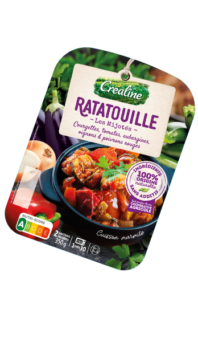Purées, soupes
et légumes cuisinés
Des légumes à consommer sans modération !
Chez Créaline, nous cultivons la passion des légumes depuis plus de 30 ans et avons à cœur de faciliter votre quotidien. Pour concilier plaisir et équilibre sans contrainte, nous veillons à vous préparer de délicieuses et savoureuses recettes de légumes de saison pour satisfaire toutes vos envies. Des purées onctueuses, des soupes et veloutés réconfortants, ainsi qu’une gamme de légumes cuisinés avec toutes les saveurs et qualités originelles des légumes.
Nos recettes renferment tous les bienfaits que la nature nous a donné.
Rendez-vous au rayon frais fruits et légumes de votre supermarché pour savourez sans plus attendre nos recettes de saison gourmandes, équilibrées et pratiques !




